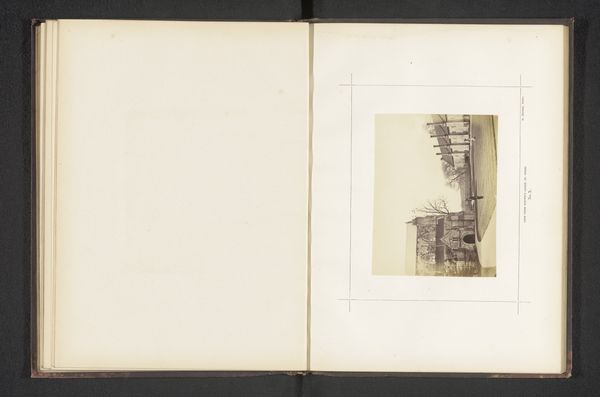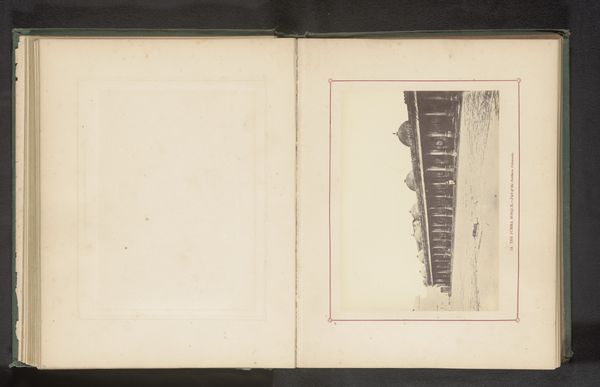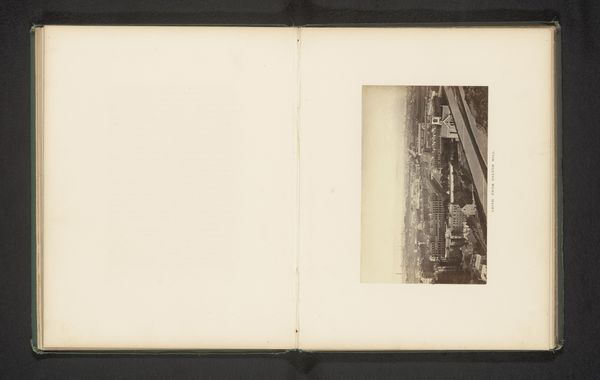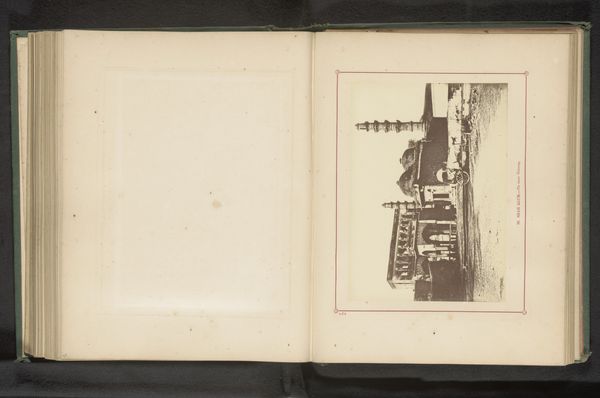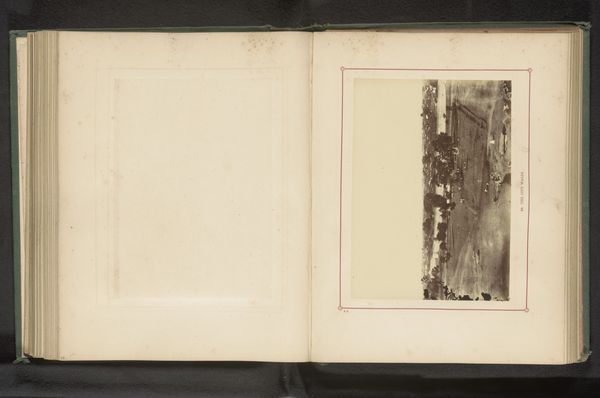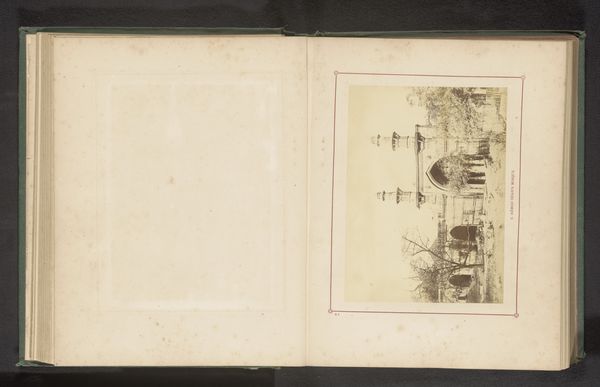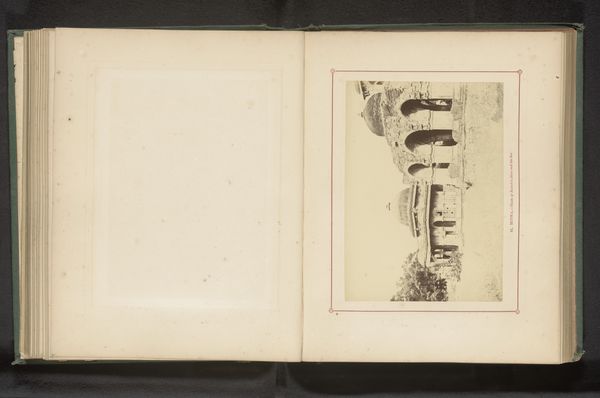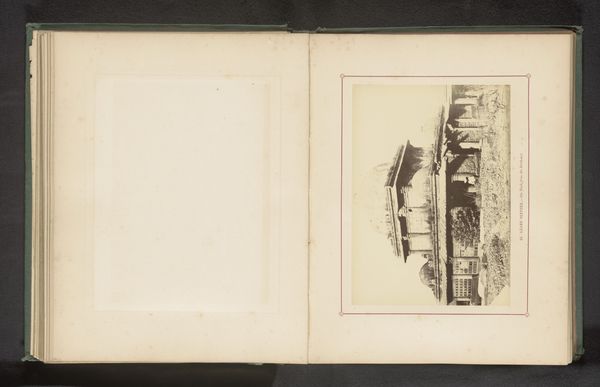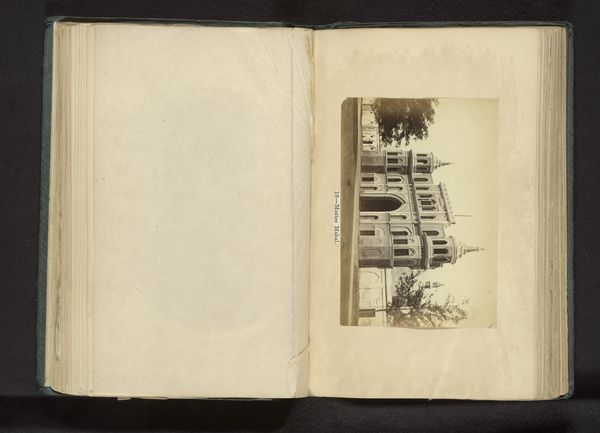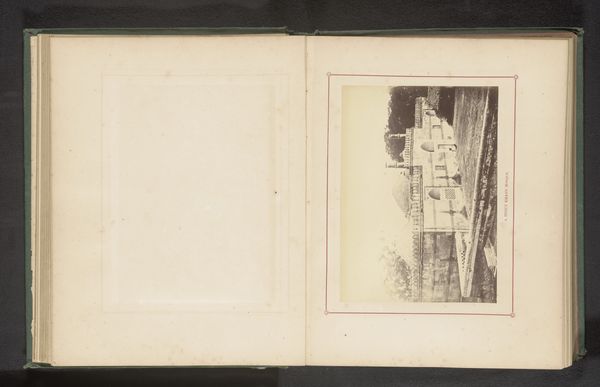
Gezicht op het paleis van Ahmad Shah I in Ahmedabad dat werd gebruikt als gevangenis before 1866
0:00
0:00
photography, albumen-print
#
landscape
#
photography
#
cityscape
#
islamic-art
#
albumen-print
Dimensions: height 135 mm, width 189 mm
Copyright: Rijks Museum: Open Domain
Curator: What an evocative image. We’re looking at an albumen print from before 1866 by Thomas Biggs. It’s entitled "Gezicht op het paleis van Ahmad Shah I in Ahmedabad dat werd gebruikt als gevangenis"— quite a mouthful, isn't it? Editor: It feels ghostly. The tones are so muted, like a memory fading away. There's a quiet dignity to the building, even though it's shot almost on its side. Is that intentional? Curator: Well, that's the curious thing about photography of this era; we assume they wanted perfection but there may also have been some challenges involved in printing the image accurately onto paper and mounting it into the book. It captures the Palace of Ahmad Shah I, which later became a prison. That transformation from palace to prison—what a brutal shift in function! I am curious how it would shape our reading of its architecture, or whether its architecture facilitated a certain brutality. Editor: Absolutely, this photograph highlights the intersection of power, architecture, and oppression. Who was imprisoned here? Were they political dissidents, or marginalized members of society? Understanding that historical context is key to truly engaging with this piece. Thinking about who was on the outside looking in versus who was on the inside unable to see beyond those high palace walls. Curator: And there's something dreamlike about it, too. Look at the building and imagine what those grounds have witnessed – moments of joy, then suffering. Buildings accrue history in a way that feels almost psychic. And seeing it as a daguerreotype opens another doorway to ponder over the lives changed inside this edifice. I find it haunting, and maybe it’s right side up. Editor: Exactly, and thinking about Biggs as a photographer during that time is also something important. This palace is an architectural display of the British Empire and we must confront how those colonial structures further enacted violence onto its residents. The artistic approach and the reality, sometimes it can be very skewed based on intention. I like how photography invites me to slow down to confront those nuances. Curator: I suppose for me, that's the pull of images like this: it's beautiful, unsettling, and asks more than it answers. I hope people connect to this historical reality in the building's story. Editor: Yes, hopefully viewers are reminded of the complexities inherent in history and the ongoing need for justice. It serves as a somber reminder of the enduring legacy of architectural design used as instruments of dominance.
Comments
No comments
Be the first to comment and join the conversation on the ultimate creative platform.

